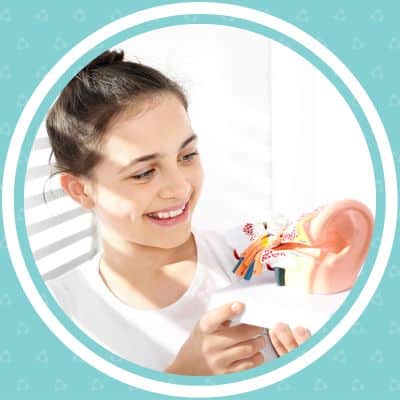The ear is an intricate and vital part of the human body that plays a crucial role in hearing and balance. Understanding its anatomy can help us appreciate its complexity and how it functions. In this blog, we’ll discuss the anatomy of the ear and the different parts that make up this amazing sensory organ.
Outer Ear
The outer ear is the visible part of the ear and includes the earlobe, the helix and the auricle. The auricle is the cartilage and skin-covered part that collects and directs sound waves into the ear canal. The ear canal is a narrow tube that leads to the eardrum, also called the tympanic membrane.
Middle Ear
The middle ear is a small, air-filled chamber located behind the eardrum. It contains three tiny bones called the ossicles, which are the malleus (hammer), incus (anvil) and stapes (stirrup). The ossicles work together to amplify and transmit sound waves from the eardrum to the inner ear.
The middle ear is also connected to the Eustachian tube, which helps regulate pressure in the middle ear and equalizes it with the air pressure outside the body.
Inner Ear
The inner ear is a complex, fluid-filled structure that includes the cochlea, vestibule and semicircular canals. The cochlea is responsible for converting sound waves into electrical impulses that are sent to the brain. The vestibule and semicircular canals are responsible for balance and spatial orientation.
The cochlea is a spiral-shaped organ that contains tiny hair cells that convert sound waves into electrical signals. The vestibule contains two sacs called the utricle and saccule, which detect changes in head position and linear acceleration. The semicircular canals are three fluid-filled canals that detect changes in head rotation and angular acceleration.
Nerves
The ear is connected to the brain by the auditory nerve and the vestibular nerve. The auditory nerve carries electrical signals from the cochlea to the brain, while the vestibular nerve carries information about balance and spatial orientation.
We know this blog contained a lot of complicated terminology, but we hope it sparked some curiosity to learn more about your amazing ears! Understanding its anatomy can help us appreciate its complexity and the importance of taking care of our hearing and balance health. If you have concerns about your ear health, request an appointment at Roanoke Valley ENT and Allergy.
Paul Lenkowski, M.D., Ph.D., is a board certified Otolaryngologist (ENT) and an accomplished head, neck and sinus surgeon. He is passionate about his job and helping his patients. Dr. Lenkowski is dedicated to improving your quality of life and partnering with you to find the best-individualized treatment for your needs. His kind and pleasant demeanor along with his vast experience in the ENT and allergy field will ensure that you and your family receive top-notch care. Dr. Lenkowski earned his B.S. in Chemical Engineering from Rutgers University and went on to receive his M.D. and Ph.D. as part of the Medical Scientist Training Program at the University of Virginia. He completed his Otolaryngology Residency at the University of Iowa.

